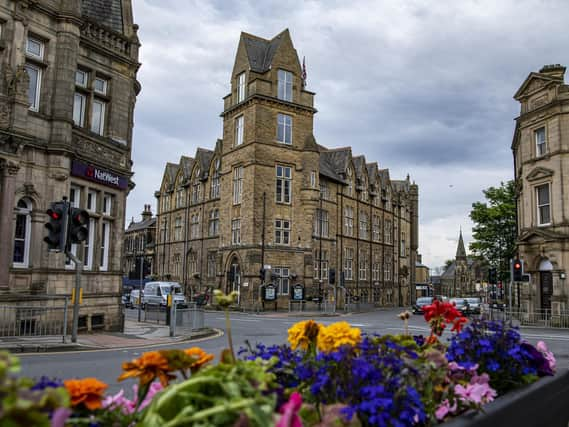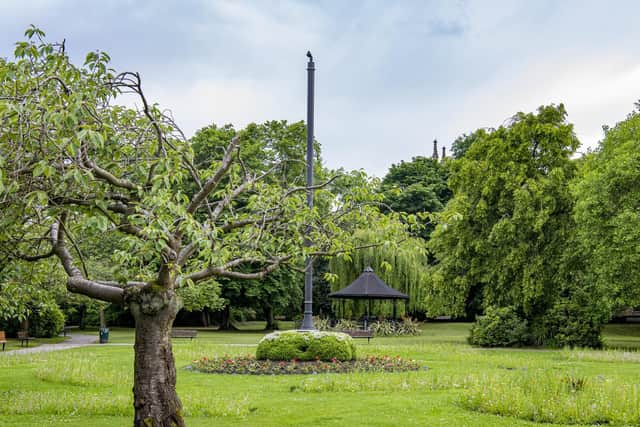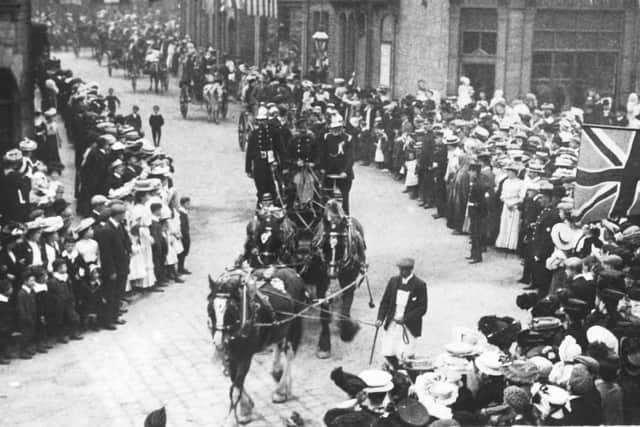From cricket stars to one of the nation's favourite bears, Pudsey has quite a story to tell


Many felt more than a bit betrayed when they were absorbed into the City of Leeds in 1972, and lost their independence. It had been created as a municipal borough in 1900, and can lay claim to the fact that it was the last to have been given that status by Victoria herself – she died only a few months after applying her seal of approval to the proposal.
To the millions of readers of The Meaning of Liff, the best-selling spoof dictionary by Douglas Adams and his friend John Lloyd, a “Pudsey” is something altogether different.
Advertisement
Hide AdAdvertisement
Hide AdAdams (the creator of The Hitchhiker’s Guide to the Galaxy) and Lloyd hit on the idea of pulling together a book in which the names of towns and places in the UK were given completely new definitions and explanations. “Goole”, according to them, is “the noise that a football crowd makes when their team narrowly misses scoring a vital goal”. And “Pudsey”? Well, it’s “the curious flat wads of dough left on a kitchen table after someone has been cutting scones out of it”.


That is one of the more friendly entries, and at least it offers a little warm domesticity, and Pudsey people enjoyed the jest.
However, they probably didn’t appreciate a music hall gag told for many decades which focused on the (then) dreadful air quality in the town. During the industrial revolution, the town was a thriving hive of factories, but that brought the community the unwanted accolade of being one of the most polluted places in Britain.
It wasn’t exactly Pudsey’s fault – the town nestles in a valley between the cities of Bradford and Leeds, both of which had far larger, and far more, factories. There is a slight temperature inversion in the valley, and that meant that whichever way the wind blew, poor old Pudsey copped the lot.
Advertisement
Hide AdAdvertisement
Hide AdIn the past, some comics would joke that Pudsey was “the only place in England where the pigeons flew backwards, to keep the soot out of their eyes”. Other places may have chuckled, but it fell rather flat in Pudsey. Folk here were more amused by the constant (and affectionate) references to the town in Sir Michael Palin’s TV series Ripping Yarns.


Those comedians would not recognize the place today, for it rejoices in the fact that it has a quartet of lush open spaces. There’s the formality of Pudsey Park itself, and then there are Tyersal and Queen’s Parks, as well as Swinnow Moor. In the last three, there’s been a recent emphasis on providing open air gym equipment, sports pitches, and a lot of tree-planting.
Queen’s Park is also where the annual carnival is usually held, and Pudsey Park itself has a Green Flag award for excellence, and is the second most visited park within the city boundaries, just behind Roundhay. Again, it aims at pleasing the widest possible range of people – youngsters love the skate park area, while older folks enjoy the immaculate bowling green.
One of the most unusual buildings in the town can be found in Robin Lane – and indeed it would be hard to miss, or overlook, what was the old Town Hall. It was designed by two Bradford lads, Hope and Jardine (who sound more like a theatre variety act than an architectural practice) with a foundation stone laid in 1879. Its original purpose was to house the local Mechanic’s Institute. It was opened in the following year by the town’s Liberal MP, Herbert John Gladstone, the youngest son of the famous Victorian Prime Minister.
Advertisement
Hide AdAdvertisement
Hide AdThe site for what later became the Town Hall in 1912 had been a vacant plot between a pair of Co-op stores, and on it arose the most extraordinary, bizarre and bewildering combination of design elements. What we can wonder at today has (among other features on the exterior) a tower, a Romano-British-style tympanum arch over the main door, Corinthian columns, Georgian sash windows, Gothic revival dormers and, as if that wasn’t all enough, a bartizan.
The last is not only an extremely useful word in Scrabble, but is in fact an overhanging wall-mounted turret that projects from late medieval fortifications. From it, defenders can drop noxious substances on the invading plebs below. There is no evidence that Pudsey councillors or their employees ever stooped to such unpleasant actions on their ratepayers.
There was also at one point a huge spire on top of the tower (removed in the mid-1960s), and over the years the structure has performed many uses – home to the grammar school, a public meeting hall, a lecture theatre, and a centre for the Health and social care teams, among them.
The most likely explanation for the town’s name is that it means an “island” of good ground, nestled between barren moorland, and that it belonged to a Saxon chap called Pudoc – in the Domesday book it appears as Podechesai, Earlier, it was in the proudly independent Kingdom of Elmet, which flourished between the fifth and seventh centuries. Elmet’s territory was broadly what is today West and South Yorkshire, and much of North Derbyshire, so it was a reasonably sized force to be reckoned with.
Advertisement
Hide AdAdvertisement
Hide AdThere is proof that Pudsey traded with the much wider world, for in 1775 a man called Benjamin Schofield was on Pudsey Common when he stumbled on a hoard of silver Roman coins, about 100 in all. What’s interesting is that many of the coins pre-dated the time of Julius Caesar, and the Roman invasions of these shores. As usual with discovered hoards, the big questions are – who buried them, and why?
Like many of Yorkshire’s communities, the town grew rich on the wool industry, and suffered later when it declined. Surprisingly, the parish church – of St Lawrence – doesn’t have a medieval past, but because of its position and its fine tower is visible for miles around. It was built in the early 1800s and known as a “Waterloo church”, because it was constructed around the time of the battle.
The church is one of the very few in England which has a cricket team named after it, which was initially formed in 1845. It plays in the Bradford Cricket League, and it has a fair few famous names on its honours board. That list includes Sir Len Hutton, Herbert Sutcliffe, and more recently Steve “Bumpy” Rhodes. Among other celebrated players associated with the town are Ray Illingworth and Matthew Hoggard.
And there are two other (and quite different) fields in which Pudsey distinguishes itself. Both are national institutions. Bellringers will know of the Pudsey Surprise Major, a fiendishly complicated peal that can take nearly three hours to ring through. And then there’s one of the nation’s favourite characters, Pudsey Bear, the beloved mascot of the BBC’s Children in Need.
Advertisement
Hide AdAdvertisement
Hide AdHe was designed by Joanna Lane, and she decided to give him his name because her grandfather had been a mayor of the town. And it could be said that if anyone established Pudsey in the nation’s consciousness, it was that little chap.
Comment Guidelines
National World encourages reader discussion on our stories. User feedback, insights and back-and-forth exchanges add a rich layer of context to reporting. Please review our Community Guidelines before commenting.